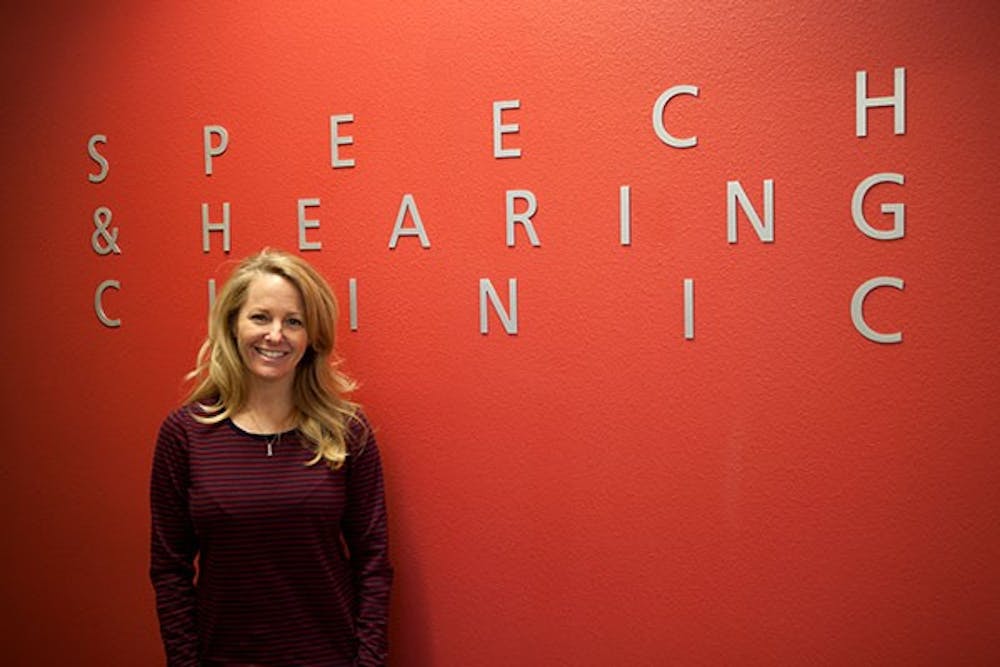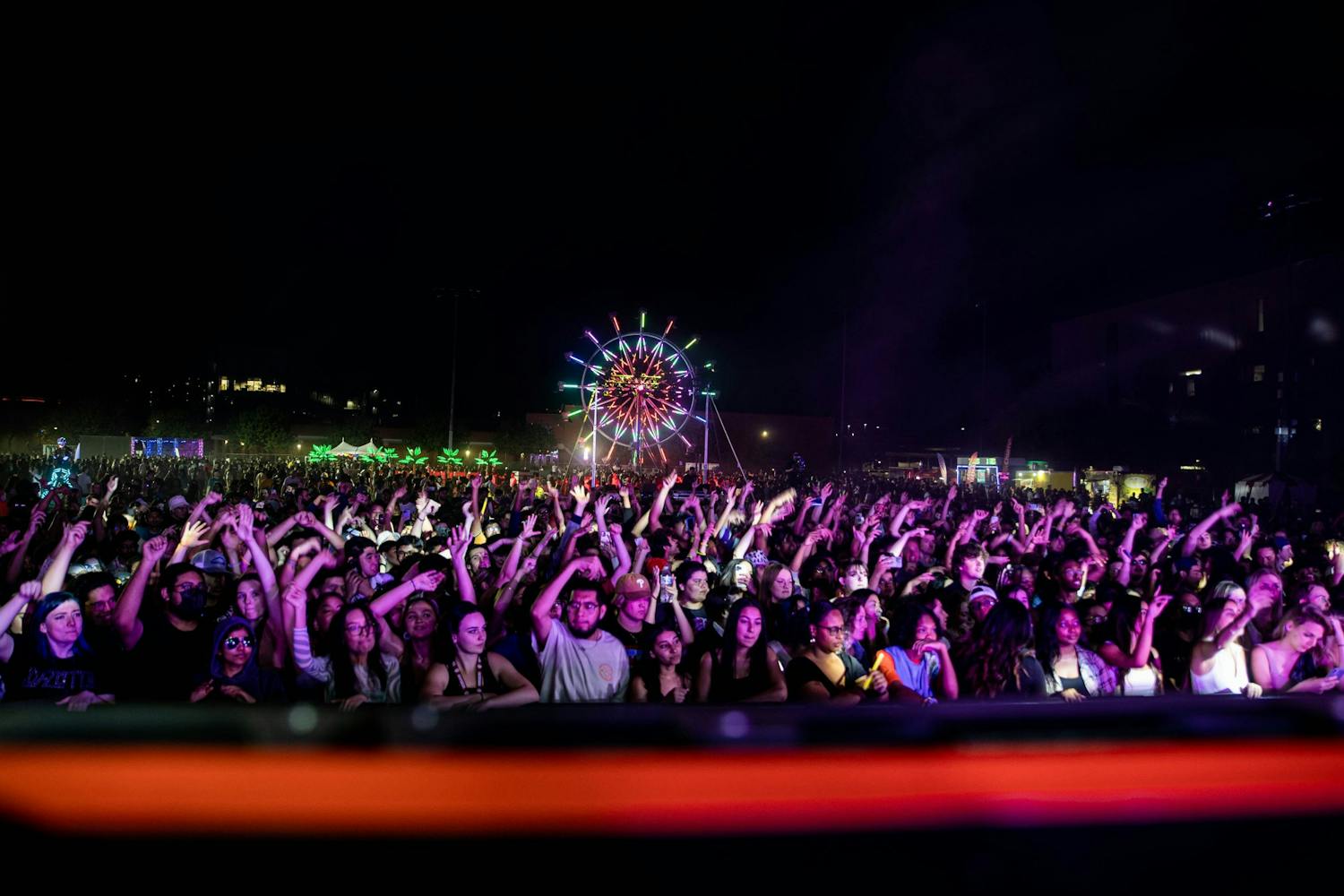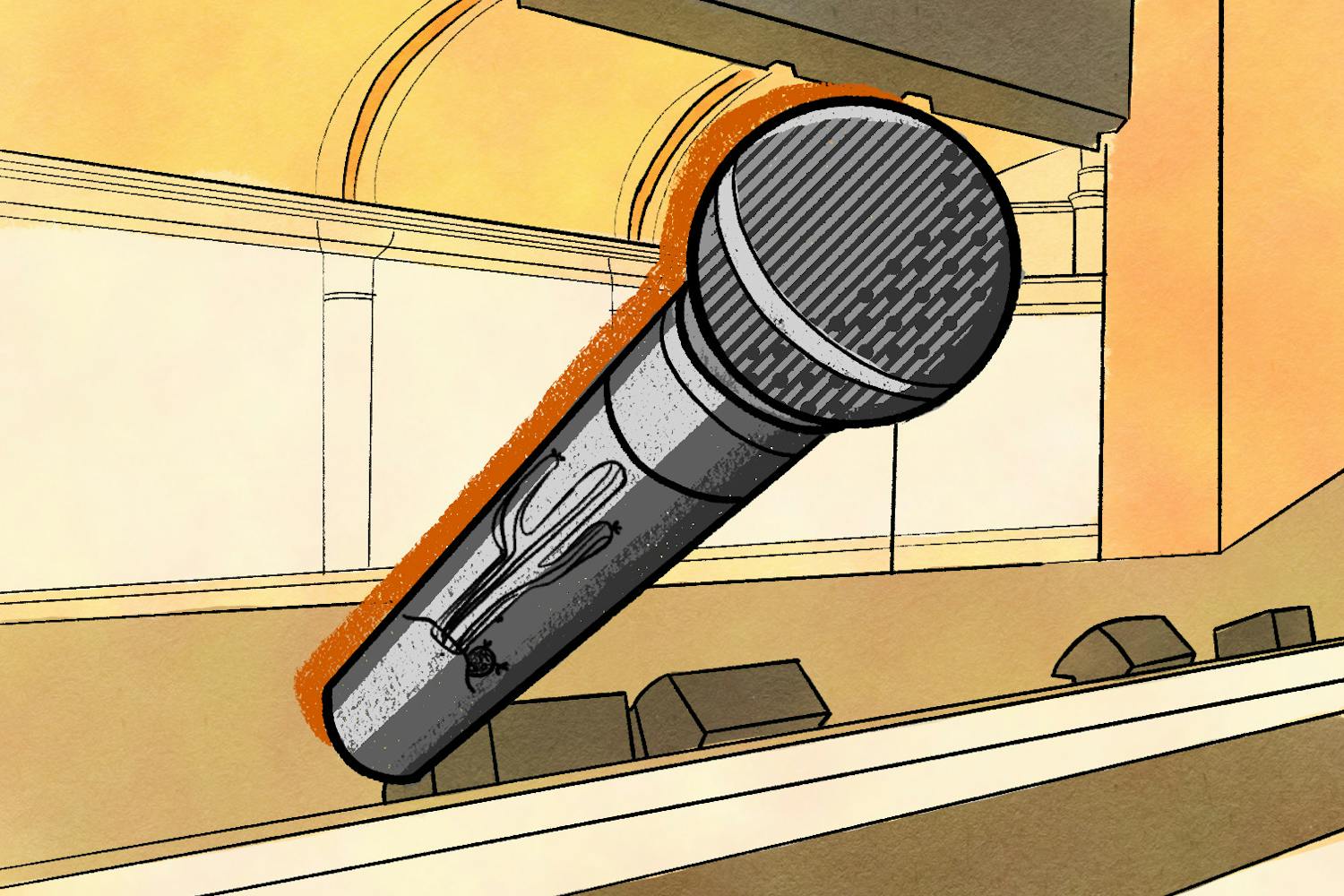 Curator Julio César Morales meets with guests at ASU’s Art Museums opening reception on Feb. 14. Morale’s most recent exhibit, "This Is Not America", brings together various pieces from different artists relating to social change in the United States such as ideas of citizenship, war, and borders. (Photo by Mario Mendez)
Curator Julio César Morales meets with guests at ASU’s Art Museums opening reception on Feb. 14. Morale’s most recent exhibit, "This Is Not America", brings together various pieces from different artists relating to social change in the United States such as ideas of citizenship, war, and borders. (Photo by Mario Mendez)The ASU Art Museum is now open for the spring 2014 season, and it includes some exciting new collections by up-and-coming artists.
The most prominently featured new collection is by Eduardo Sarabia and is entitled “Moctezuma’s Revenge.” It includes paintings, ceramics and tapestries, all commenting on the historical and contemporary struggles of the Mexican community. The most striking pieces in the exhibit look from far away like random multicolored paint splotches on canvasses – organic and beautiful but hiding a complexity that only becomes clear upon closer viewing.
Underneath the splotches there are landscapes and portraits done with almost photographic realism. These meticulous underlying scenes would be a pleasure to view if it weren’t for the invasive gobs covering up their most important parts.
According to Sarabia, “There is something very violent about this … but it’s also beautiful.”
The intersection of beauty and violence is a common theme among all of the art in “Moctezuma’s Revenge,” and appropriately so, as the same intersection is occurring in modern day Mexico and the borderlands of the U.S.
In a small annex on the same floor is the collection entitled “Echoes of Japan: Prints by Western Women.” These tiny pictures are interpretations of traditional Japanese art as painted by women from America and Europe in the late 19th and early 20th centuries. These pieces are interesting in their historicalness and a welcome break from the heavy, often disturbing subject matter of the previous collection.
Up the stairs one level is a collection that is not new but still one of the most immediately impactful and accessible for the audience. Entitled “This is Not America,” it includes works by various artists that mock modern capitalism and its effects in playful, sometimes dangerous, ways. From an ancient new world manuscript with Disney characters invading the pages, to a procession of delicate clay businessmen doing the Nazi salute, the symbolism in this exhibit is hard to ignore.
Also included in this collection is an amazing example of contemporary painting. The untitled piece by Teresa Fernández depicts a young woman uselessly but diligently mopping the wet sand of a beach. Any moment the surf will come in and wash away her hard work, but she does it anyway, and in view of the infamous Mexican-American border wall.
This collection is best summed up by a projection of text in one of the corners that says “We are living in an age where we are testing everybody’s empathy quotient.”
On the museum’s top floor ceramics take over in a collection entitled “Muck: Accumulations, Accretions and Aggregations.” These pieces by various artists focus on the unique modern collision of nature and society.
Artist Susan Beiner worries that, “Eventually we will be in a sterile environment,” and her work displayed here, with its lack of color and lively textures, reflects this dry, lifeless future.
Other pieces in the collection include grotesque heaps of limbs, internal organs and bones, blocks of colored artichoke-looking things, and a wall of fossil-like cylinders through which light shines at the viewer.
Overall, there is some very meaningful work at the ASU Art Museum this spring, and especially since admission is free, you should check it out.
Museum director Gordon Knox said, “Art is our species’ most continuous, most complex form of knowledge collection.” So any art that can be seen, should be.
You can reach the reporter at sergio.h.martinez@asu.edu or follow him on Twitter @shmartin09




